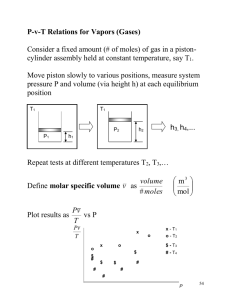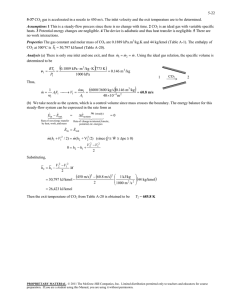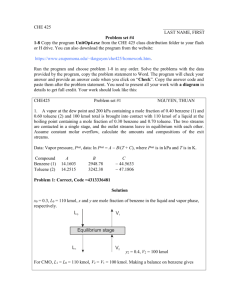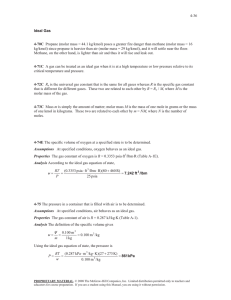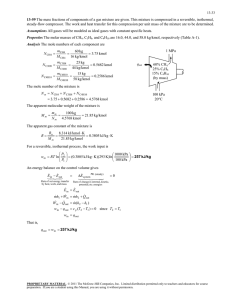are given. The heat transfer is to be determined for... and N are 2.0, and 28.0 kg/kmol. (Table A-1).
advertisement
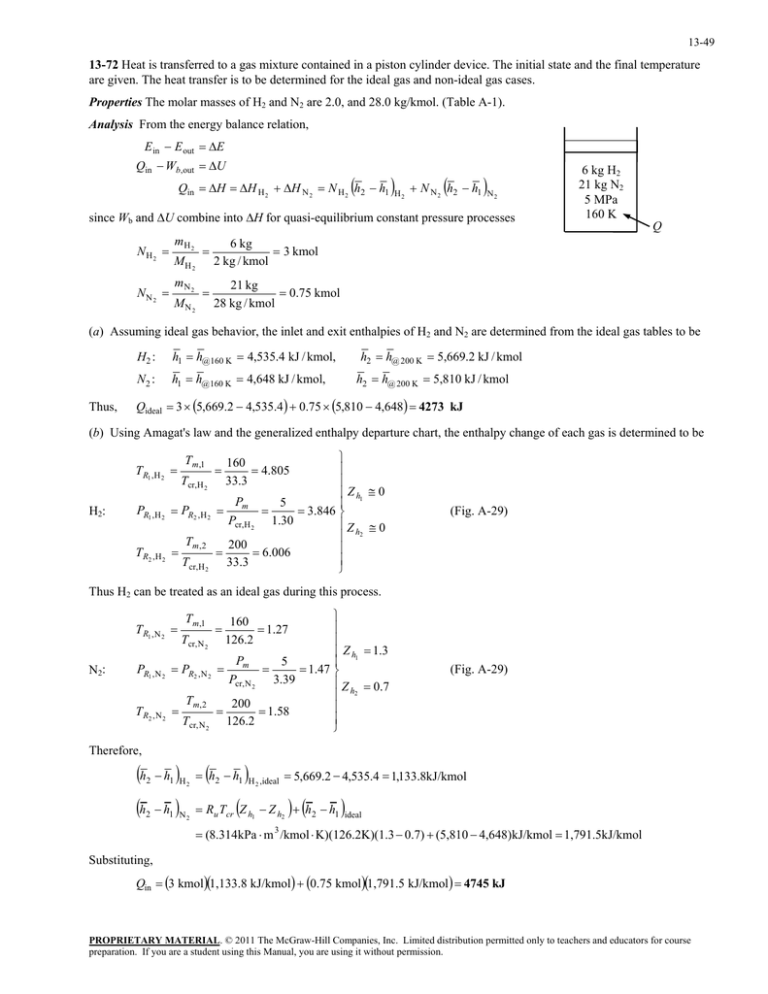
13-49 13-72 Heat is transferred to a gas mixture contained in a piston cylinder device. The initial state and the final temperature are given. The heat transfer is to be determined for the ideal gas and non-ideal gas cases. Properties The molar masses of H2 and N2 are 2.0, and 28.0 kg/kmol. (Table A-1). Analysis From the energy balance relation, E in E out E Qin Wb,out U Qin H H H 2 H N 2 N H 2 h2 h1 H 2 N N 2 h2 h1 N 2 since Wb and U combine into H for quasi-equilibrium constant pressure processes NH2 NN2 mH 2 MH 2 mN 2 MN 2 6 kg 3 kmol 2 kg / kmol 21 kg 0.75 kmol 28 kg / kmol 6 kg H2 21 kg N2 5 MPa 160 K Q (a) Assuming ideal gas behavior, the inlet and exit enthalpies of H2 and N2 are determined from the ideal gas tables to be Thus, H2 : h1 h@160 K 4,535.4 kJ / kmol, N2 : h1 h@160 K 4,648 kJ / kmol, h2 h@ 200 K 5,669.2 kJ / kmol h2 h@ 200 K 5,810 kJ / kmol Qideal 3 5,669.2 4,535.4 0.75 5,810 4,648 4273 kJ (b) Using Amagat's law and the generalized enthalpy departure chart, the enthalpy change of each gas is determined to be T R1 ,H 2 H 2: Tm,1 Tcr,H 2 PR1 ,H 2 PR2 ,H 2 T R2 ,H 2 Tm , 2 Tcr,H 2 Z h1 0 Pm 5 3.846 Pcr,H 2 1.30 Zh 0 2 200 6.006 33.3 160 4.805 33.3 (Fig. A-29) Thus H2 can be treated as an ideal gas during this process. T R1 , N 2 N 2: Tm,1 Tcr, N 2 PR1 , N 2 PR2 , N 2 T R2 , N 2 Tm , 2 Tcr, N 2 Z h1 1.3 Pm 5 1.47 Pcr, N 2 3.39 Z h 0.7 2 200 1.58 126.2 160 1.27 126.2 (Fig. A-29) Therefore, h2 h1 H h2 h1 H ,ideal 5,669.2 4,535.4 1,133.8kJ/kmol 2 h2 h1 N 2 2 Ru Tcr Z h1 Z h2 h2 h1 ideal (8.314kPa m 3 /kmol K)(126.2K)(1.3 0.7) (5,810 4,648)kJ/kmol 1,791.5kJ/kmol Substituting, Qin 3 kmol1,133.8 kJ/kmol 0.75 kmol1,791.5 kJ/kmol 4745 kJ PROPRIETARY MATERIAL. © 2011 The McGraw-Hill Companies, Inc. Limited distribution permitted only to teachers and educators for course preparation. If you are a student using this Manual, you are using it without permission.


